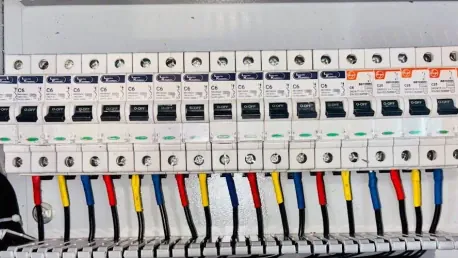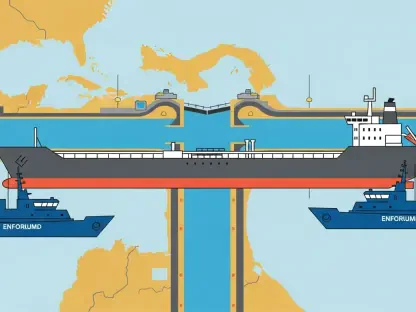The International Annealed Copper Standard (IACS) was established by the United States Department of Commerce over a century ago and has since served as a fundamental framework in the development of electrical codes and standards. This standard primarily focuses on the electrical conductivity of copper, which was, and still is, widely recognized for its superior conductive properties. However, with the rise of aluminum in various industries and the increasing demands for metal resources due to global electrification, there is a compelling argument that the IACS is outdated and in dire need of revision.
The Origins of the IACS
Establishing the Copper Standard
The origins of the IACS can be traced back to over 110 years ago when the United States Bureau of Standards analyzed copper samples from various refiners and wire manufacturers. The average resistance from these samples was then used to establish a standardized value of electrical conductivity for commercially available copper wire. This value, set at 100%, created a uniform resistance table that became a cornerstone for global electrical codes and standards. In the early days of electrification, this copper standard provided a critical reference point, ensuring consistency and reliability in electrical installations.
Copper’s Dominance in Early Electrification
During the initial phase of electrification, copper rapidly became the preferred metal for electrical conduction due to its high conductivity and widespread availability. The IACS’s focus on volume conductivity further solidified copper’s dominance, as the standard did not take into account the weight of the metal, only its volumetric conductivity. This meant that copper’s exceptional conductive properties were highlighted, leading to its widespread adoption in electrical applications. As copper became synonymous with electrical conduction, the focus on copper in the IACS reaffirmed its preeminent position in the industry.
The Rise of Aluminum
Post-World War II Surge
The role of aluminum within various industries, particularly in electrical applications, expanded significantly post-World War II. Throughout the war, aluminum was crucial for wartime production, especially in the manufacturing of aircraft. Following the war, aluminum production surged, and by 1954, it had surpassed copper production. Today, aluminum production exceeds copper by an impressive 300% on a weight basis and 900% by volume. Despite these advances, aluminum’s potential as a conductor has been consistently measured against the copper standard, limiting its broader adoption due to these outdated benchmarks.
Aluminum in Electrical Applications
While aluminum’s density is lower than copper’s, it has been utilized in electrical applications by increasing its cross-sectional areas to match copper’s conductivity. Aluminum’s volume conductivity is around 61% of the IACS standard; however, its lower density means a larger volume of aluminum weighs only half as much as copper. This crucial aspect was historically overlooked, primarily because copper was more readily available during electrification’s early days. As a result, aluminum did not achieve the same level of prominence as copper in electrical applications, despite demonstrating substantial conductive properties when weight is considered.
The Molecular Perspective
Valence Electrons and Conductivity
Understanding the molecular perspective of electrical conductivity involves examining the role of weight and the significance of valence electrons. Electrical conductivity is provided by valence electrons in an atom’s outer orbit, while protons and neutrons primarily contribute to the atom’s weight without affecting its conductivity. Aluminum, despite having more valence electrons than copper, possesses significantly fewer protons and neutrons, making it a much lighter atom overall. This molecular distinction suggests that viewing metals purely through a volume-oriented conductivity lens, without accounting for weight, presents an imbalanced perspective on their conductive properties.
Weight vs. Volume Conductivity
When comparing metals based on volume-oriented conductivity alone without recognizing the weight differences, the perception is skewed. Aluminum’s lighter weight and higher valence electron count indicate that a revised IACS should incorporate both volume and weight to offer a more precise and effective measurement of aluminum’s conductivity. The current IACS standard overlooks this crucial element, potentially misrepresenting aluminum’s true capabilities as a conductor. Addressing these discrepancies through an updated standard would give a balanced assessment of both aluminum and copper, thereby enabling a fairer comparison and fostering better utilization of available metal resources.
Financial Implications
Cost-Effectiveness of Aluminum
Financially, aluminum presents a more cost-effective solution compared to copper. As of the current analysis, copper is priced around $4.00 per pound, whereas aluminum costs approximately $1.00 per pound. Given aluminum’s higher conductivity per weight, $1 worth of aluminum can match the electrical conductance of $8 worth of copper, illustrating the significant financial advantages of using aluminum over copper. This substantial difference in cost highlights the outdated nature of the IACS, which misguides industry stakeholders by undervaluing aluminum’s potential efficiency and cost benefits as an electrical conductor.
Economic Efficiency and Resource Utilization
The financial implications extend beyond mere cost considerations to encompass economic efficiency and resource utilization. The outdated IACS may mislead stakeholders into underestimating aluminum’s effectiveness, leading to suboptimal decisions regarding material selection in electrical applications. Updating the standard to reflect aluminum’s true capabilities could foster more efficient resource use and yield broader economic benefits. Such a revision is particularly critical as global electrification efforts surge, demanding flexible and cost-efficient solutions to meet rising demands.
Future Projections and Demand
Increasing Copper Demand
Projections for copper demand reveal potential shortages driven by ongoing global electrification initiatives. The International Energy Forum predicts a dramatic rise in copper demand, potentially doubling to 50 million metric tonnes by 2035. However, supply forecasts by S&P Global indicate that the copper supply is likely to struggle to keep pace with this growing demand by as early as 2025. This imminent supply-demand imbalance underscores the urgency of revising the IACS to incorporate a more balanced perspective on metal conductivity, thus preventing potential shortages and ensuring a reliable supply of conductors for future electrification needs.
The Need for Updated Standards
Given the projected struggles in meeting copper demand, revising the IACS becomes increasingly imperative to address potential shortages and enhance conductor supply adequacy. An updated standard that factors in both volume and weight conductivities could mitigate these challenges by facilitating more efficient resource allocation. Such an update would not only ensure a steady supply of conductors necessary for extensive electrification but also pave the way for broader acceptance and utilization of aluminum, thereby transforming the landscape of electrical applications to accommodate evolving industry requirements.
Industry Consensus
Shifting Perspectives
The consensus across the industry recognizes an urgent need for a revised conductivity standard that accurately reflects the practicalities of metal conductivity, considering both weight and volume. A shift in perspective towards acknowledging aluminum’s substantial potential in a market historically dominated by copper is crucial. This transformation would enable more informed decision-making and support future resource management initiatives aligned with contemporary electrification demands. As stakeholders increasingly understand the balance between aluminum’s light weight and its conductive properties, the call for a revised IACS gains momentum.
Ensuring Optimal Resource Utilization
The International Annealed Copper Standard (IACS) was established by the United States Department of Commerce over a century ago. Since its inception, it has been a crucial foundation for developing electrical codes and standards. The IACS mainly focuses on the electrical conductivity of copper, which is well known for its excellent conductive properties. However, as aluminum has become more prevalent in various industries and the demand for metal resources has surged due to global electrification, there is a valid concern that the IACS has become outdated.
Given these shifts, there is a pressing need to revisit and potentially revise the IACS to better reflect current materials and technological advancements. Modern electrical systems and the ongoing evolution in material science warrant an updated standard that encompasses newer conductive materials such as aluminum. Such a revision would ensure that the framework supports contemporary needs and technological innovations, maintaining relevance and fostering progress in the electrical engineering field.









